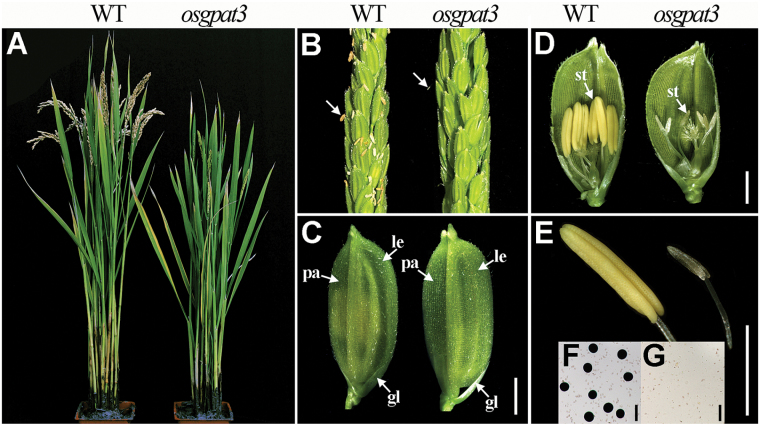Fig. 1.
Phenotypic comparison between wild-type (WT) and osgpat3 mutant rice. (A) A WT plant (left) and an osgpat3 mutant plant (right) after producing seeds. (B) A WT panicle (left) and an osgpat3 mutant panicle (right) at the heading stage. The arrows indicate anthers. (C) A WT spikelet (left) and an osgpat3 mutant spikelet (right). gl, glume; le, lemma; pa, palea. (D) A WT spikelet (left) and an osgpat3 mutant spikelet (right) after removing half of the lemma and palea. st, stamen. (E) A WT anther (left) showing normal yellow color and an osgpat3 mutant anther (right), which is smaller and pale to white in color. (F) WT pollen grains stained with 1% I2-KI solution at stage 12, showing mature pollen grains. (G) Pollen grains of osgpat3 stained with 1% I2-KI solution at stage 12; no mature pollen grains are present. Bars=2 mm in (C–E) and 50 μm in (F) and (G). (This figure is available in colour at JXB online.)

